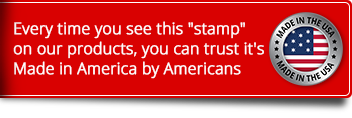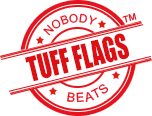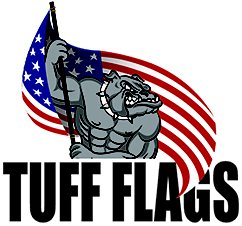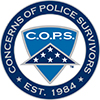Advanced CHEF Sewing Method
CHEF is the acronym for Commercial Hybrid Extended Flex. Tuff Flags Commercial Grade US flags are sewn with 2 sewing methods. Each has benefits and disadvantages. We use the method most advantageous to each area of the flag. This is a more difficult process but the final product is substantially stronger.
The Two Sewing Methods:
Unidirectional Chain Stitch:
- Benefit: This stitch flexes and is not rigid. Like the flagpole itself, the flag needs to flex with the wind flow. Otherwise, each locked loop will begin snapping as it is put under pressure. The Uni-Directional Chain Stitch method is the same sewing approach that LEE and Levi's jeans use on the inseam of thier jeans. It's virtually indestructible until the thread rots.
- Disadvantage: This approach requires an End-Stop. Uni-directional chain stitch is not the same as the regular chain stitch you would find on a t-shirt sleeve which unravels. This method relies on having a secured termination point. In the case of a flag, it is the star field and header. The star field and the header are protect areas that do not fail. Flags fail at the fly-end first. Even more specifically, flags fail first at the top and bottom corners of the fly-end. The result is that this method must only be used on the stripe seams which is where it is superior.
Lock Stitch:
- Benefit: It does not require an End Stop and secondly, each stitch has to break independently.
- Disadvantage: Lock Stitch is rigid. Fabric inherently flexes and wind creates continuous variable pressure on the flag. The flag wants to stretch.
The CHEF sewing method uses Uni-Directional Chain Stitch for the Stripe Seams and Lock Stitch for the perimeter of the flag and the fly-end where there isn't a fly-end to act as an End-stop.
Beyond this CHEF method, Tuff Flags adds many reinforcements and strengthening qualities. Stripes are sewn with double stitch. Thread is T-60 (60 pounds of pressure to break), Fly-end is not only reinforced with 4-6 rows to stitching but we also add 102 Stitch X-boxes to the fly-end and its corners. Stripe seams have a full quarter inch turn making the seams heartier and stronger.
We take a lot of pride in the careful construction of our flags. We hope you enjoy their vibrant colors and the long flag life you receive.








